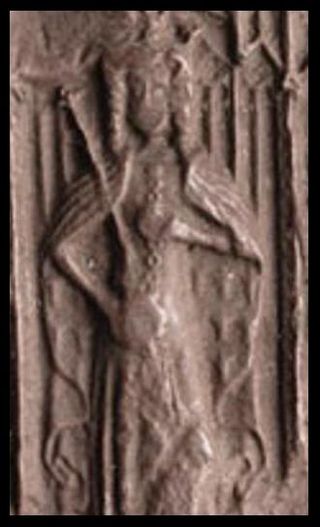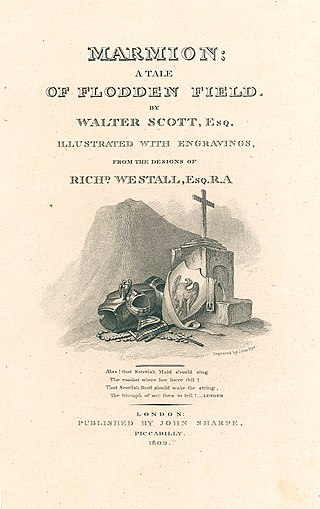Related Research Articles

James V was King of Scotland from 9 September 1513 until his death in 1542. He was crowned on 21 September 1513 at the age of seventeen months. James was the son of King James IV and Margaret Tudor, and during his childhood Scotland was governed by regents, firstly by his mother until she remarried, and then by his second cousin, John, Duke of Albany. James's personal rule began in 1528 when he finally escaped the custody of his stepfather, Archibald Douglas, Earl of Angus. His first action was to exile Angus and confiscate the lands of the Douglases.

James IV was King of Scotland from 11 June 1488 until his death at the Battle of Flodden in 1513. He inherited the throne at the age of fifteen on the death of his father, James III, at the Battle of Sauchieburn, following a rebellion in which the younger James was the figurehead of the rebels. James IV is generally regarded as the most successful of the Stewart monarchs. He was responsible for a major expansion of the Scottish royal navy, which included the founding of two royal dockyards and the acquisition or construction of 38 ships, including the Michael, the largest warship of its time.

Margaret Tudor was Queen of Scotland from 1503 until 1513 by marriage to King James IV. She then served as regent of Scotland during her son's minority, and successfully fought to extend her regency. Margaret was the eldest daughter and second child of King Henry VII of England and Elizabeth of York, and the elder sister of King Henry VIII of England.

The Battle of Flodden, Flodden Field, or occasionally Branxton, was a battle fought on 9 September 1513 during the War of the League of Cambrai between the Kingdom of England and the Kingdom of Scotland, resulting in an English victory. The battle was fought near Branxton in the county of Northumberland in northern England, between an invading Scots army under King James IV and an English army commanded by the Earl of Surrey. In terms of troop numbers, it was the largest battle fought between the two kingdoms.

Murdoch Stewart, Duke of Albany was a leading Scottish nobleman, the son of Robert Stewart, Duke of Albany, and the grandson of King Robert II of Scotland, who founded the Stewart dynasty. In 1389, he became Justiciar North of the Forth. In 1402, he was captured at the Battle of Homildon Hill and would spend 12 years in captivity in England.

Michael, popularly known as Great Michael, was a carrack or great ship of the Royal Scottish Navy. She was the largest ship built by King James IV of Scotland as part of his policy of building a strong Scottish navy.
Joan Ure was the pen name of Elizabeth Thoms Clark, a Scottish poet and playwright. She was born Elizabeth Thoms Carswell on 22 June 1918 in Wallsend, Tyneside, of Scottish parents who moved to Glasgow. She had a daughter, Frances, by Jack Clark, a businessman. Her sister Joan provided the first half of her pen name.

A makar is a term from Scottish literature for a poet or bard, often thought of as a royal court poet.

James Hamilton, 1st Earl of Arran and 2nd Lord Hamilton was a Scottish nobleman, naval commander and first cousin of James IV of Scotland. He also served as the 9th Lord High Admiral of Scotland.

Marmion: A Tale of Flodden Field is a historical romance in verse of 16th-century Scotland and England by Sir Walter Scott, published in 1808. Consisting of six cantos, each with an introductory epistle, and copious antiquarian notes, it concludes with the Battle of Flodden in 1513.

Andrew Forman was a Scottish diplomat and prelate who became Bishop of Moray in 1501, Archbishop of Bourges in France, in 1513, Archbishop of St Andrews in 1514 as well as being Commendator of several monasteries.

Alexander Stewart was an illegitimate son of King James IV of Scotland by his mistress Marion Boyd. He was the King's eldest illegitimate child. He was an elder brother of Catherine Stewart, his only full sibling, and was an older half-brother of the future James V. He was installed as Archbishop of St Andrews at the age of eleven and was killed beside his father the King at the Battle of Flodden aged twenty.
Janet Kennedy, was a Scottish noble and the mistress of King James IV of Scotland.

Castle Sween, also known as Caisteal Suibhne, and Caistéal Suibhne, is located on the eastern shore of Loch Sween, in Knapdale, south of the forestry village of Achnamara on the west coast of Argyll, Scotland. Castle Sween is thought to be one of the earliest stone castles built in Scotland, having been built in the late 11th century. The castle's towers were later additions to wooden structures which have since vanished.
Ada de Warenne was the Anglo-Norman wife of Henry of Scotland, Earl of Northumbria and Earl of Huntingdon. She was the daughter of William de Warenne, 2nd Earl of Surrey by Elizabeth of Vermandois, and a great-granddaughter of Henry I of France. She was the mother of Malcolm IV and William I of Scotland.

Reincarnation is regularly mentioned in feature films, books, and popular music. The similar concept of transmigration has been used frequently to the point of cliché in the sense of people "switching bodies", in which the identity of a character transfers to another's body, either unilaterally or by exchange, or to an animal or object. This concept has been used many times in various films, particularly in Indian cinema and television.
Alexander Gordon, 3rd Earl of Huntly was a Scottish nobleman. He was a member of Parliament, a member of the Privy Council, a regent and Lieutenant of the kingdom.
Ena Lamont Stewart was a Scottish playwright.

Robert Trotter was a Scottish actor, director, and photographer.
Isobel Hoppar or Hopper was a Scottish landowner and governess of Margaret Douglas. She was a powerful political figure in Scotland during the youth of King James V, and her wealth and influence attracted misogynous comment from her faction's enemies.
References
- ↑ "Birth registration". FreeBMD. Retrieved 5 November 2022.
- ↑ Ada F. Kay - Biography, https://www.imdb.com/name/nm3963506/bio?ref_=nm_ov_bio_sm
- ↑ "Aronkincaid". Archived from the original on 4 December 2009. Retrieved 23 July 2010. article on actor
- ↑ A.J. Stewart, Died: 1513, Born: 1929 -- The autobiography of AJ Stewart
- 1 2 Ian Wilson Mind out of time?: Reincarnation claims investigated
- ↑ A.J. Stewart Falcon: The Autobiography of His Grace James IV King of Scots
- ↑ Norman Macdougall James IV Introduction